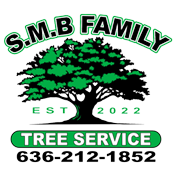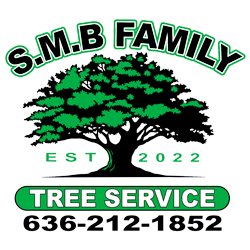Tree trunk rotting requires felling and removal of the tree, but depending on the circumstances, you may be able to mitigate damage. If your tree is experiencing severe rot, contact S.M.B. Family Tree Service to work with professionals from House Springs’ expert tree service.
These professionals can help you determine the health of a tree and provide the steps to save dying or infected trees. Continue reading to learn about tree trunk decay, signs to look for, and the next steps.
Signs of Decaying Trees
You will see clear symptoms if your tree is decaying or experiencing a fungal disease. The following provides some signs your tree has decay or an infection:
- Dying or discolored leaves
- Excessive fungi on or surrounding the trunk
- Holes, cracks, or lack of bark
- Root rot or damage
- Leaning
These signs point to root rot, infected trees, or dead trees. If you notice any of the above, contact a professional tree company. The professionals can help you determine your tree’s health and whether you should take steps to fix the issue or remove the tree.
Types of Tree Rot
Many types of tree rot exist, some of which are fatal. Understanding what ails your tree can help you repair the issue whenever possible. Rotting can signify many illnesses, such as the following:
- Root rot
- Sap rot
- White rot
- Heart rot
- Brown rot
- And more
All rot might kill a tree, so request professional help when you notice your tree trunk rotting. The faster you diagnose the tree, the better its chances of survival.
Preventing Tree Decay
The best way to protect your trees is to prevent decay from taking hold. A property owner must provide consistent care for the trees in their yard and regularly request inspections to ensure the tree’s health.
Adequate watering, feeding, and pruning will extend the lifespan of your tree and mitigate health issues. Ask your tree professional for a plant health care schedule. Each tree’s requirements are unique; giving it everything it needs to remain healthy will benefit your property.
Do not wound your tree unnecessarily. Wounds open the tree up to infestations, fungal infections, and more. For your tree’s health, avoid the following:
- Nailing or screwing anything into trees
- Hitting it with a mower or weed wacker
- Breaking branches or wearing away bark with swings, ropes, or tree houses
- Improperly pruning
Preventing tree decay ensures your property remains healthy and beautiful for longer, reducing your risk of property damage or injury.
Treating Infected Trees
It may be too late if your tree has a fungal infection or other health issues. However, when caught early enough and treated correctly, you could give your tree another chance at life. To treat your tree, request help from a certified arborist.
Sometimes, a healthy tree will heal itself if the decay is new or small. An arborist may cut off the infected or dead branches, but do not attempt this yourself. Cutting or carving away the rot encourages further disease and infections by opening the wound.
A professional may use certain anti-fungal sprays to limit the spread of disease. However, the best way to treat rotting is a strict feeding, pruning, and watering regimen. Healthy trees will heal themselves, so do what you can to protect them.
Contact S.M.B. Family Tree Service
Protecting your trees and extending their lifespan can improve your property value, curb appeal, and enjoyment. Learn more about decaying trees and tree trunk rotting by calling our team. Contact S.M.B. Family Tree Service at (636) 212-1852 and request an estimate in House Springs, MO, today.

